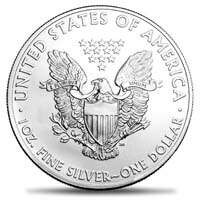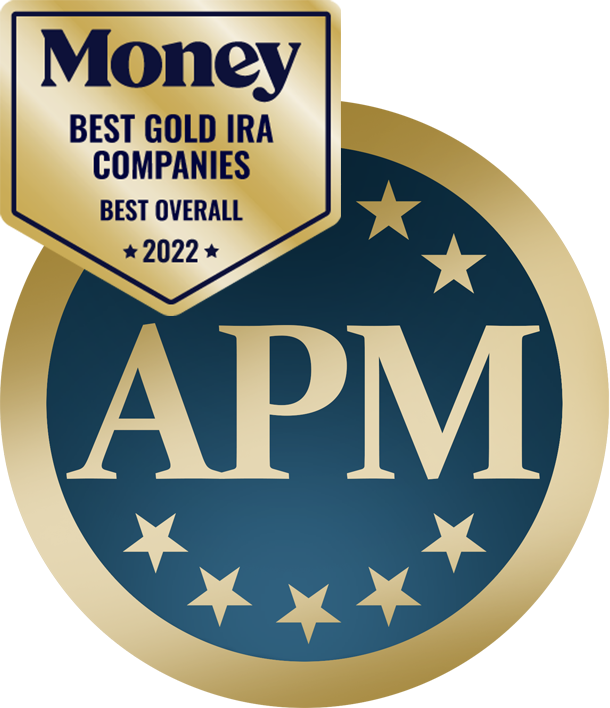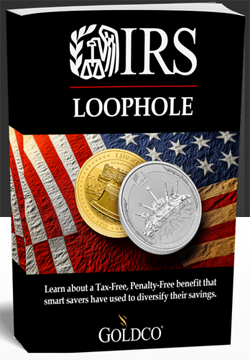When it comes to saving for retirement, investors should prioritize diversifying their portfolios and safeguarding their savings against market volatility and inflation. One effective strategy to achieve this is investing in physical precious metals like gold, silver, platinum, or palladium using a gold IRA.
A gold IRA offers numerous benefits to investors, including tax advantages and protection against economic uncertainties. In this article, we will delve into the rules and regulations surrounding gold IRAs, along with practical advice on how to safeguard retirement savings with physical precious metals.
We will help you discover why investing in these assets could be a wise choice for securing a prosperous future.
What Is A Gold IRA?
A gold IRA, also referred to as a precious metals IRA, is a specialized type of Individual Retirement Account (IRA) that enables investors to include physical gold bullion, coins, and other precious metals as qualified retirement investments.
In contrast to a traditional IRA that primarily holds stocks, bonds, and mutual funds, a gold IRA is self-directed and entails tangible assets in the form of gold, silver, platinum, and palladium.
The precious metals in a gold IRA are securely stored in a designated facility, offering a safe haven asset that can potentially safeguard against inflation and market volatility. Understanding the distinction between a gold IRA and a traditional IRA is crucial for investors seeking to diversify their retirement portfolios.
A gold IRA can offer tax advantages, as the Internal Revenue Service allows certain types of gold investments to be held in retirement accounts. In other words, it lets you take advantage of a simple and easy IRS loophole.
With that being said, let’s take a look at some important gold IRA rules.
6 Gold IRA Rules To Consider
There are several rules and regulations surrounding gold IRAs that investors should be aware of. Here are 6 important gold IRA rules to consider.
1. Type Of Precious Metals And Purity Standards
To ensure compliance with IRS regulations, it is important to understand the requirements for holding metals in a gold IRA. Certain gold, silver, platinum, and palladium coins and bars that meet specific fineness standards are eligible for investment in an IRA. Investors must be aware of these guidelines and select the appropriate metals for their gold IRA investments.
Specifically, the rules for each precious metal are:
- Gold bullion should have a minimum of 0.995 purity
- Silver bullion should have a minimum of 0.999 purity
- Platinum should have a minimum of 0.9995 purity
- Palladium should have a minimum of 0.9995 purity
Moreover, IRA-approved gold bars must also have a minimum fineness of .995. Silver, platinum, and palladium coins and bars have their own fineness standards as well.
When working with a reputable gold IRA company and custodian, procuring bullion from them rarely poses an issue. They provide valuable advice on what can and can’t be included in your investment.
Popular IRA-Eligible Bullion
Here are some popular coin choices for a gold IRA:
Gold
- American Gold Eagle bullion and proof, due to an exception
- American Buffalo bullion
- Canadian Gold Maple Leaf bullion
- Australian Kangaroo bullion
- Austrian Gold Philharmonic bullion

Silver
- American Silver Eagle bullion and proof, due to an exception
- Australian wildlife and Lunar bullion silver coins
- Canadian Silver Maple Leaf bullion
- Austrian Silver Philharmonic

Platinum
- American Platinum Eagle bullion and proof, due to an exception
- Canadian Platinum Maple Leaf bullion
- Australian Platinum Koala bullion
- Isle of Man Noble coins

Palladium
- American Palladium Eagle bullion and proof, due to an exception
- Canadian Palladium Maple Leaf bullion

Furthermore, you can also include certain premium coins or proof coins, but we recommend getting help from a Precious Metals Specialist to know what type of “collectibles” are allowed in a gold IRA.
Get This Gold & Silver Guide 100% Free!
2. Metals Must Be From A COMEX Or NYMEX-Approved Refinery
To qualify for inclusion in a retirement account, it is essential that bullion rounds and bars made of any of the four precious metals are produced by manufacturers accredited by NYMEX/COMEX, LME, BMA, NYSE/LIFFE/CBOT, and ISO-9000, or a national mint.
This requirement ensures that only bullion from reputable mints, whether sovereign or private, is eligible for an IRA. Additionally, many mints that adhere to these requirements label their products as IRA-eligible, ensuring a smoother purchasing process.
3. Contribution Limits & Tax Implications
Investors should be aware of the restrictions, contribution limits, and tax implications associated with investing in a gold IRA. Similar to traditional IRAs, gold IRAs have annual contribution limits of $7,000 for individuals under 50 and $8,000 for those over 50.
Moreover, investors with a Traditional Gold IRA are required to pay income tax when they withdraw distributions, while investors with a Roth IRA are taxed similarly to other investments.
It’s important to note that gold investments in an IRA are generally exempt from the 28% collectible tax rate unless the IRS determines that the bullion in the IRA violates the guidelines for “collectibles”.
Learn more about gold IRA tax rules on withdrawals in Gold IRA Tax Rules: The Ultimate Gold IRA Tax Guide For 2025.
4. IRA Precious Metals Must Be Stored In An Approved Depository
Investors who choose to invest in a gold IRA must adhere to an important rule: their precious metals must be stored in an approved depository. These depositories, typically secured vaults that comply with strict security standards, serve to safeguard investors’ assets by protecting against theft, damage, and loss.
“It’s worth noting that investors are not permitted to store their bullion or specie in safe deposit boxes, home safes, or closets.” According to Trevor Gertz, CEO of Goldco, this is a crucial distinction.
To facilitate this process, gold IRA companies often act as intermediaries. These companies not only provide the bullion for the retirement account but also ensure that the metals are securely stored in the depository.
In summary, investors do not physically possess their metals but maintain ownership of them as part of their IRA. Nonetheless, they retain the ability to access their metals at the depository whenever they desire.
5. Avoid Taking Distributions Until Age 59 ½
According to the IRS regulations, individuals cannot make distributions from their gold IRA until they reach the age of 59 ½. At this point, any withdrawals made would be subject to income taxes, and the gold IRA assets can be liquidated for cash or taken physical possession of without penalties.
One notable advantage of a gold IRA is the opportunity to possess and sell physical gold and other precious metals. This provides investors with the flexibility to retain them for future use, exchange them during times of crisis, or pass them on to heirs.
In the event that you need to access your funds before reaching age 59 ½, there are potential costs to consider, including a 10% early withdrawal penalty and a 28% capital gains tax on any profits from metal value appreciation within your gold IRA.
Certain exceptions exist where you may avoid the 10% early withdrawal penalty, such as disability or purchasing a first home, and setting up annuity payments based on life expectancy can also exempt you from the penalty.
Upon reaching the age of 72, mandatory distributions from the gold IRA become necessary. Failure to comply with these requirements could result in a 50% excise tax imposed for each year that the required amount is not withdrawn.
Get Up To $10,000 In FREE Silver!
6. Buy Metals From An Approved Custodian
In a precious metals IRA, investors need to partner with a custodian, which acts as a financial institution responsible for safeguarding the assets within the gold IRA. The custodian plays a critical role in setting up a self-directed IRA, managing the transfer of funds to the precious metals dealer, and facilitating the transportation and storage process for physical precious metals.
Most gold IRA companies have partnered with reputable custodians, offering these services as part of their comprehensive package. Typically, investors will utilize existing funds in their 401(k), TSP, or similar retirement savings account to purchase gold and other precious metals using cash.
Your gold IRA company will provide the necessary paperwork and hold your hand throughout the whole process of setting up your gold IRA. It usually takes between 1 to 3 weeks. Now, let’s take a look at the gold IRA setup process.
How To Start A Gold IRA?
To start or “set up” a gold IRA is an easy process. Here’s the process of starting a gold IRA:
- 1. Request a Free Gold IRA Guide to learn more about precious metals IRAs
- 2. By requesting this guide, you’ll be contacted by a Precious Metals Specialist
- 3. If you want to move forward, you’ll then speak with an IRA Specialist who will ask about your current retirement account and help to confirm rollover or transfer eligibility
- 4. If eligible to convert your existing retirement funds into a gold IRA, you’ll then create an account with a custodian capable of handling self-directed IRAs. Your gold IRA company will help direct you to an appropriate custodian
- 5. Once the paperwork is done, you can roll over funds from your existing retirement account to the new self-directed IRA
- 6. With the funds in your new gold IRA, you can purchase the precious metals of your choice
- 7. Lastly, your precious metals will be stored at an approved depository
As simple as that!
But what gold IRA company should you choose? Let’s take a look at our recommendation for the top 8 most reputable gold IRA companies in the industry.
Best Gold IRA Companies
To make your research process a bit easier, here’s a list of 6 top-rated precious metals and gold IRA companies that we have reviewed and vetted based on BBB/BCA ratings and complaints, customer reviews, annual fees, precious metals selection, storage options, promotions, and buy-back programs.
You can feel safe taking help from any of these companies to set up a gold IRA or for regular precious metals purchases:
Gold IRA Rules: FAQ
What are the rules and regulations for investing in a gold IRA?
The IRS has strict guidelines on purity and type of metals that can be held in a gold IRA:
- – Gold bullion should have a minimum of 0.995 purity
- – Silver bullion should have a minimum of 0.999 purity
- – Platinum should have a minimum of 0.9995 purity
- – Palladium should have a minimum of 0.9995 purity
Moreover, IRA-approved gold bars must also have a minimum fineness of .995. Silver, platinum, and palladium coins and bars have their own fineness standards as well.
Additionally, the bullion rounds and bars of all four precious metals must be produced by manufacturers accredited by NYMEX/COMEX, LME, BMA, NYSE/LIFFE/CBOT, and ISO-9000, or a national mint to be held in a retirement account.
Another important rule of a gold IRA is that the precious metals must be stored in an approved depository.
What types of gold are allowed in a gold IRA?
You can hold both physical gold coins and gold bars and rounds in a gold IRA.
Are there any restrictions on how much gold I can invest in a gold IRA?
Just like traditional IRAs, gold IRAs are subject to annual contribution limits, which are currently set at $7,000 per year for individuals under the age of 50 and $8,000 for those over 50 for 2025.
Are there any tax advantages for investing in a gold IRA?
A gold IRA offers tax advantages similar to a traditional IRA, allowing tax-free interest accumulation until retirement. It’s important to note that penalties apply if an account holder takes a distribution before reaching age 59½. This makes it a valuable option for investors planning for their future.
Are there any fees associated with investing in a gold IRA?
The fees vary depending on the custodian and the amount of precious metals being held in the IRA.
Here is an overview of the expected Gold IRA fees:
Initial Setup Fees | $0-$80 (some companies wave this fee) |
Annual Admin Fee | $50-$100 (some companies wave this fee) |
Annual Storage Fees | $100 (non-segregated) / $150 (segregated) |
Investment Minimum Gold IRA | Typically, $10,000 and up |
Get Up To $10,000 In FREE Silver!
Final Thoughts Gold IRA Rules
Investing in a gold IRA can greatly enhance your retirement portfolio. It offers diversification and security, especially during uncertain economic times. However, due to the specific rules and regulations governing gold IRAs, it is crucial to consult a qualified financial advisor or investment professional. They can guide you in adhering to all regulations and help you maximize the benefits of this unique retirement investment opportunity.
Disclosure: You should always consult with your trusted financial advisor and a tax professional before moving forward with any investment decisions. This will ensure that you make the best investment and tax-related decisions for your unique situation.





















